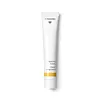What's inside
What's inside
 Key Ingredients
Key Ingredients

 Benefits
Benefits

 Concerns
Concerns

 Ingredients Side-by-side
Ingredients Side-by-side

PEG-6
HumectantSodium Bicarbonate
AbrasiveJojoba Wax PEG-120 Esters
Disteareth-100 Ipdi
Cellulose
AbsorbentSilica
AbrasiveSynthetic Wax
AbrasiveHelianthus Annuus Seed Oil
EmollientRetinol
Skin ConditioningLactic Acid
BufferingSalicylic Acid
MaskingTetrahexyldecyl Ascorbate
AntioxidantGlycine Soja Oil
EmollientAniba Rosodora Wood Oil
AstringentEugenia Caryophyllus Leaf Oil
MaskingPelargonium Graveolens Flower Oil
MaskingCitrus Limon Peel Oil
MaskingRosa Damascena Flower Oil
MaskingEugenia Caryophyllus Bud Oil
MaskingGlycyrrhiza Glabra Root Extract
BleachingCamellia Sinensis Leaf Extract
AntimicrobialCymbopogon Schoenanthus Oil
MaskingCymbopogon Martini Oil
MaskingCupressus Sempervirens Leaf/Nut/Stem Oil
EmollientHydrolyzed Opuntia Ficus-Indica Flower Extract
AbrasiveBixa Orellana Seed Oil
EmollientCitrus Limon Peel Extract
EmollientEucalyptus Globulus Leaf Oil
PerfumingCarthamus Tinctorius Seed Oil
MaskingOlive Oil PEG-7 Esters
EmollientTocopherol
AntioxidantCaprylyl Glycol
EmollientBHT
AntioxidantCaprylic/Capric Triglyceride
MaskingSaccharide Isomerate
HumectantWater
Skin Conditioning1,2-Hexanediol
Skin ConditioningPolyglyceryl-3 Stearate
EmulsifyingBeheneth-5
EmulsifyingCitric Acid
BufferingSodium Citrate
BufferingLinalool
PerfumingEugenol
PerfumingCitronellol
PerfumingLimonene
PerfumingGeraniol
PerfumingPEG-6, Sodium Bicarbonate, Jojoba Wax PEG-120 Esters, Disteareth-100 Ipdi, Cellulose, Silica, Synthetic Wax, Helianthus Annuus Seed Oil, Retinol, Lactic Acid, Salicylic Acid, Tetrahexyldecyl Ascorbate, Glycine Soja Oil, Aniba Rosodora Wood Oil, Eugenia Caryophyllus Leaf Oil, Pelargonium Graveolens Flower Oil, Citrus Limon Peel Oil, Rosa Damascena Flower Oil, Eugenia Caryophyllus Bud Oil, Glycyrrhiza Glabra Root Extract, Camellia Sinensis Leaf Extract, Cymbopogon Schoenanthus Oil, Cymbopogon Martini Oil, Cupressus Sempervirens Leaf/Nut/Stem Oil, Hydrolyzed Opuntia Ficus-Indica Flower Extract, Bixa Orellana Seed Oil, Citrus Limon Peel Extract, Eucalyptus Globulus Leaf Oil, Carthamus Tinctorius Seed Oil, Olive Oil PEG-7 Esters, Tocopherol, Caprylyl Glycol, BHT, Caprylic/Capric Triglyceride, Saccharide Isomerate, Water, 1,2-Hexanediol, Polyglyceryl-3 Stearate, Beheneth-5, Citric Acid, Sodium Citrate, Linalool, Eugenol, Citronellol, Limonene, Geraniol
Water
Skin ConditioningPrunus Amygdalus Dulcis Seed Meal
AbrasiveCalendula Officinalis Flower Extract
MaskingAnthyllis Vulneraria Extract
Skin ConditioningAlcohol
AntimicrobialArachis Hypogaea Oil
Skin ConditioningChamomilla Recutita Flower Extract
MaskingHypericum Perforatum Flower/Leaf/Stem Extract
Skin ConditioningHelianthus Annuus Seed Oil
EmollientHamamelis Virginiana Bark/Leaf Extract
AstringentTriticum Vulgare Germ Oil
EmollientPrunus Amygdalus Dulcis Oil
Skin ConditioningParfum
MaskingCitronellol
PerfumingGeraniol
PerfumingMalpighia Punicifolia Fruit Extract
AntioxidantXanthan Gum
EmulsifyingLecithin
EmollientAlgin
MaskingWater, Prunus Amygdalus Dulcis Seed Meal, Calendula Officinalis Flower Extract, Anthyllis Vulneraria Extract, Alcohol, Arachis Hypogaea Oil, Chamomilla Recutita Flower Extract, Hypericum Perforatum Flower/Leaf/Stem Extract, Helianthus Annuus Seed Oil, Hamamelis Virginiana Bark/Leaf Extract, Triticum Vulgare Germ Oil, Prunus Amygdalus Dulcis Oil, Parfum, Citronellol, Geraniol, Malpighia Punicifolia Fruit Extract, Xanthan Gum, Lecithin, Algin
 Reviews
Reviews

Alternatives
Ingredients Explained
These ingredients are found in both products.
Ingredients higher up in an ingredient list are typically present in a larger amount.
Citronellol is used to add fragrance/parfum to a product. It is often derived from plants such as roses. In fact, it can be found in many essential oils including geranium, lavender, neroli, and more. The scent of Citronellol is often described as "fresh, grassy, and citrus-like".
Since the Citronellol molecule is already unstable, Citronellol becomes irritating on the skin when exposed to air.
Citronellol is a modified terpene. Terpenes are unsaturated hydrocarbons found in plants. They make up the primary part of essential oils.
Citronellol is not able to be absorbed into deeper layers of the skin. It has low permeability,
Citronellol is also a natural insect repellent.
Learn more about CitronellolGeraniol is used to add fragrance/parfum to a product. It is the main component of citronellol. It is a monoterpenoid and an alcohol.
Monoterpenes are naturally found in many parts of different plants.
Geraniol can be found in many essential oils including Rose Oil and Citronella Oil. The scent of Geraniol is often described as "rose-like". Many foods also contain Geraniol for fruit flavoring.
Geraniol can irritate the skin when exposed to air. However, irritation depends on the ability of geraniol to penetrate into the skin. In general, geraniol is not able to penetrate skin easily.
Geraniol is colorless and has low water-solubility. However, it is soluble in common organic solvents.
Like citronellol, it is a natural insect repellent.
2,6-Octadien-1-ol, 3,7-dimethyl-, (2E)-
Learn more about GeraniolHelianthus Annuus Seed Oil is the oil derived from the seeds of a Sunflower. Sunflower seed oil is non-fragrant. It is an emollient, meaning it helps to soften the skin.
Sunflower seed oil contains many fatty acids. The fatty acids found in sunflower seeds include (from highest amount to least): linoleic acid, myristic acid, palmitic acid, stearic acid, arachidic acid, oleic acid, and linolenic acid.
These fatty acids help the skin create ceramides. Ceramides play a role in repairing the skin barrier.
Helianthus Annuus Seed Oil helps moisturize the skin. This in turn helps the skin look more rejuvenated and smoother.
Sunflowers are rich in vitamin E.
Historians believe Indigenous cultures of North America domesticated sunflowers before corn. Thus they relied on sunflower oil for a variety of uses. One such use is moisturizing skin and hair.
Sunflower seed oil may not be fungal acne safe. We recommend speaking with a professional if you have any concerns.
Learn more about Helianthus Annuus Seed OilWater. It's the most common cosmetic ingredient of all. You'll usually see it at the top of ingredient lists, meaning that it makes up the largest part of the product.
So why is it so popular? Water most often acts as a solvent - this means that it helps dissolve other ingredients into the formulation.
You'll also recognize water as that liquid we all need to stay alive. If you see this, drink a glass of water. Stay hydrated!
Learn more about Water